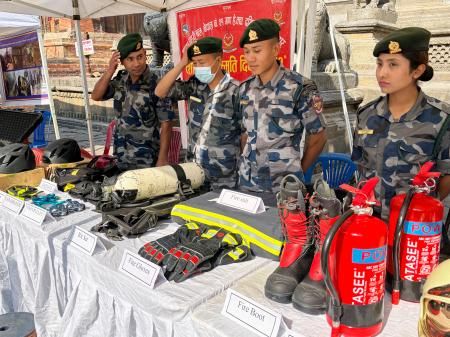Ten Years On: Reflecting on the Nepal Earthquake and the Path to Resilience
Ten years ago, on April 25th, 2013, a devastating earthquake struck Nepal, leaving an indelible mark on the nation and its people. The 7.8 magnitude quake, and its powerful aftershocks, claimed thousands of lives, destroyed countless homes, and left a legacy of trauma and hardship that continues to shape the country today. This article reflects on the significant impacts of the disaster, the remarkable recovery efforts, and the ongoing challenges Nepal faces in building a more resilient future.
The Devastation: A Nation Shaken
The 2013 Nepal earthquake was a catastrophic event, leaving a trail of destruction across the country. The immediate aftermath was characterized by:
- Massive Loss of Life: Thousands perished, with many more injured, overwhelmed hospitals struggling to cope with the influx of casualties.
- Widespread Infrastructure Damage: Historic temples, ancient cities like Kathmandu, and vital infrastructure like roads and hospitals were reduced to rubble. The damage extended far beyond urban centers, impacting rural communities disproportionately.
- Displaced Populations: Hundreds of thousands were left homeless, creating a massive humanitarian crisis requiring immediate and long-term aid.
- Economic Disruption: The earthquake severely crippled Nepal's economy, impacting tourism, agriculture, and overall productivity.
Beyond the Numbers: Human Stories of Resilience
While statistics paint a grim picture, the human stories emerging from the rubble showcased remarkable resilience. Communities came together, supporting each other in the face of unimaginable loss. International aid poured in, providing essential supplies and expertise in rescue and recovery. However, the challenges were, and continue to be, immense.
Reconstruction and Recovery: A Decade of Progress
The years following the earthquake have witnessed significant progress in rebuilding Nepal. However, the recovery has been a slow and complex process, hampered by bureaucratic hurdles, logistical challenges, and the sheer scale of the devastation. Key aspects of the recovery efforts include:
- Housing Reconstruction: A massive housing reconstruction program aimed to provide earthquake-resistant homes to those who lost their dwellings. While progress has been made, challenges remain in ensuring equitable access and completion of the program.
- Infrastructure Development: Efforts have focused on rebuilding and reinforcing critical infrastructure, incorporating earthquake-resistant design and construction techniques.
- Economic Recovery: Strategies have targeted reviving key economic sectors, particularly tourism, to stimulate growth and create jobs.
- Disaster Preparedness: Significant investments have been made in improving disaster preparedness, including early warning systems and community-based disaster risk reduction programs.
Ongoing Challenges: The Road Ahead
Despite significant progress, Nepal still faces significant challenges:
- Vulnerability to Future Disasters: Nepal remains highly vulnerable to natural disasters, including earthquakes, floods, and landslides. Investing in long-term resilience is crucial.
- Poverty and Inequality: The earthquake exacerbated existing inequalities, with marginalized communities disproportionately affected. Addressing poverty and inequality remains a central challenge.
- Corruption and Transparency: Concerns about corruption and transparency in the management of reconstruction funds continue to hinder progress. Ensuring accountability is vital.
Learning from the Past, Building a Resilient Future
The 2013 Nepal earthquake serves as a stark reminder of the devastating impact of natural disasters. However, it also showcases the remarkable resilience of the Nepali people and the power of international cooperation in responding to crises. Looking ahead, focusing on long-term resilience, sustainable development, and good governance is crucial to building a future where Nepal can withstand future shocks and thrive.
Further Reading:
Call to Action: Learn more about supporting organizations working towards disaster resilience in Nepal. You can find a list of reputable NGOs and charities through a simple online search.
